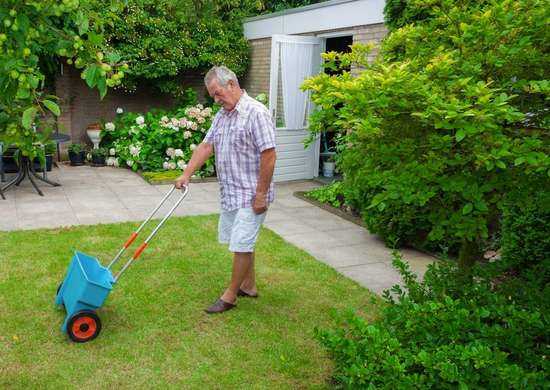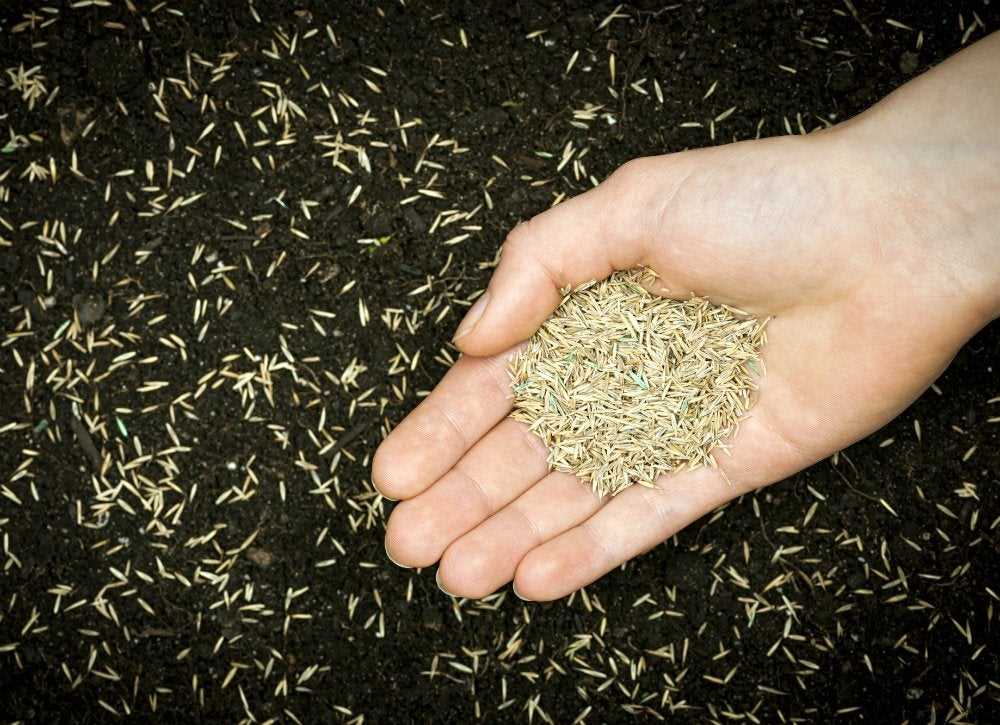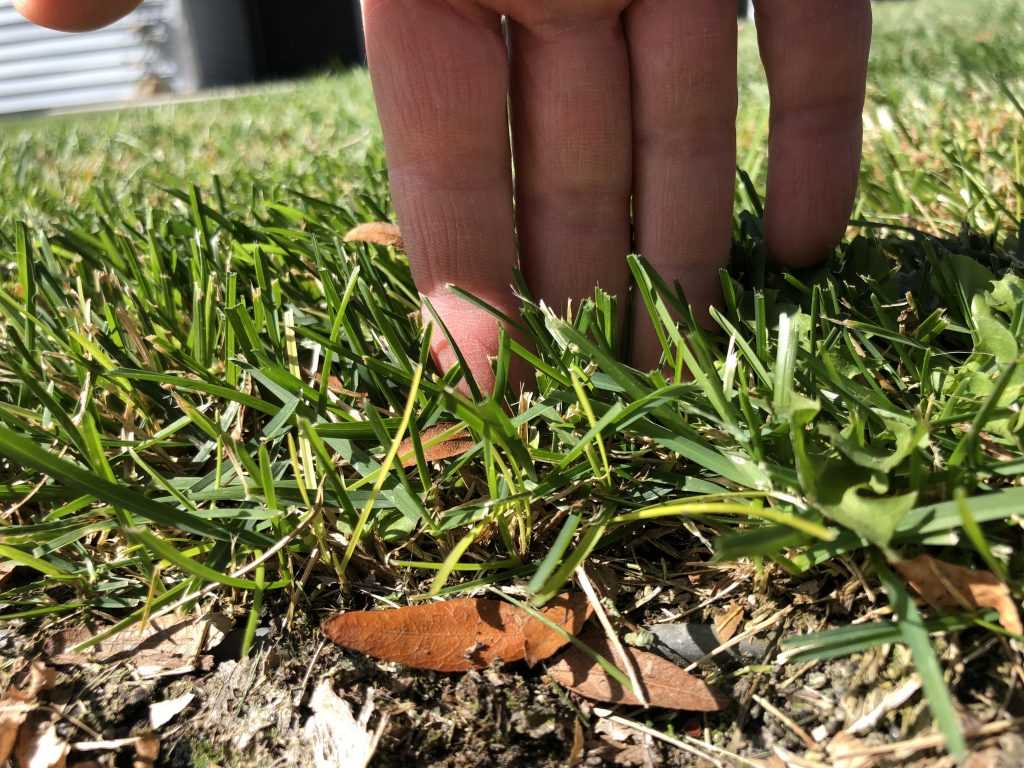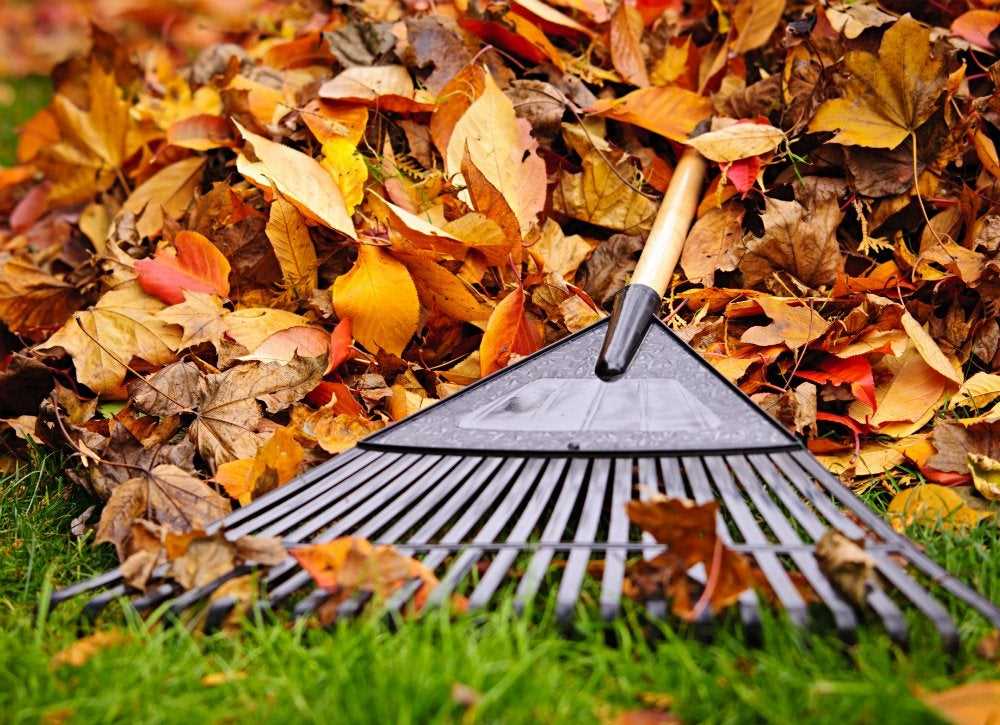- Importance of Autumn Lawn Care
- 1. Prepares the lawn for winter
- 2. Prevents pests and diseases
- 3. Promotes spring growth
- 4. Saves time and money in the long run
- 5. Enhances overall curb appeal
- Myth: No Need to Mow in Autumn
- Debunking Myth: Why Regular Mowing is Crucial
- Myth: Fertilizing Is Not Necessary During Autumn
- The Importance of Fertilizing in Autumn
- Choosing the Right Fertilizer
- Timing and Application
- Reality Check: The Importance of Fertilizing Your Lawn
- Fueling Growth and Health
- Preparing for Winter
- Timing Matters
- Professional Assistance
- The Bottom Line
- Myth: Watering is Not Required in Autumn
- Busting the Myth: Why Proper Watering is Essential
- Questions and Answers:
- Is it true that I should stop watering my lawn during the autumn?
- Should I stop mowing my lawn in the autumn?
- Is it necessary to fertilize my lawn during the autumn?
- Can I overseed my lawn during the autumn?
- Is it true that I should not rake my lawn during the autumn?
- Should I aerate my lawn during the autumn?
- Videos: Renovate ANY Lawn this Autumn – 4 EASY Steps

Autumn is a crucial time for lawn care, as the changing weather conditions present unique challenges for maintaining a healthy and vibrant lawn. However, there are many myths about autumn lawn care that often lead homeowners astray. In this ultimate guide, we will debunk these common myths and provide you with the knowledge and tools you need to ensure your lawn thrives during the autumn months.
One of the most common myths about autumn lawn care is that you should stop watering your lawn as the weather gets cooler. Contrary to popular belief, watering is still essential during this time. While your lawn may not require as much water as it does in the summer, it still needs to be properly hydrated to withstand the winter months. It is recommended to water your lawn deeply and infrequently, allowing the soil to dry out between waterings.
Another myth is that you should avoid fertilizing your lawn in the fall. In reality, autumn is an ideal time to fertilize your lawn. Fertilizing in the fall helps to strengthen the grass roots, which in turn leads to a healthier and more resilient lawn. Look for a slow-release or winterizing fertilizer that is specifically formulated for fall application. Applying fertilizer in late October or early November will provide your lawn with the nutrients it needs to stay healthy throughout the winter.
Finally, many people believe that mowing their lawn shorter in the fall will help prevent the growth of weeds and diseases. However, this is a misconception. It is best to continue mowing at the same height you have been throughout the season. Cutting your grass too short can weaken it and make it more susceptible to damage from cold weather and pests. Additionally, leaving your grass slightly longer in the fall can help to insulate the soil and protect the roots from frost.
By debunking these common myths and following the proper techniques for autumn lawn care, you can ensure that your lawn remains healthy and beautiful throughout the fall and into the winter months. With the right knowledge and care, you can enjoy a lush and vibrant lawn year-round.
Importance of Autumn Lawn Care
Autumn is a critical time for lawn care, as it prepares your lawn for the harsh winter months and sets the stage for a healthy and vibrant lawn come spring. Neglecting your lawn during this season can lead to a host of problems and make it more difficult to achieve the desired results in the following year. Here are some key reasons why autumn lawn care is important:
1. Prepares the lawn for winter
Autumn lawn care is crucial for getting your lawn ready to withstand the cold temperatures, frost, and snow that winter brings. By providing essential care during this time, you can help your lawn develop stronger roots and store the necessary nutrients it needs to survive the dormant season.
2. Prevents pests and diseases
Proper autumn lawn care can help prevent the growth and spread of pests and diseases. Fall is a prime time for certain lawn issues to develop, such as fungal diseases and insect infestations. Taking proactive measures, such as removing fallen leaves, aerating the soil, and treating for pests if necessary, can help keep your lawn healthy and free from these issues.
3. Promotes spring growth
By addressing key tasks during autumn, you can set the stage for a lush and vibrant lawn in the following spring. This includes aerating the soil, overseeding bare or thinning areas, and fertilizing the lawn. These steps help promote healthy grass growth and fill in any gaps in your lawn, creating a more uniform and attractive appearance.
4. Saves time and money in the long run
Investing time in autumn lawn care can save you both time and money in the long run. By proactively addressing issues and providing proper maintenance during the fall, you can prevent larger problems from developing, which may require costlier solutions in the future. Additionally, a well-maintained lawn requires less effort and resources to revive in the spring.
5. Enhances overall curb appeal
A well-maintained lawn is a source of pride and can greatly enhance the overall curb appeal of your property. By giving your lawn the care it needs in autumn, you can ensure that it maintains its lush, green appearance and contributes to the overall beauty of your home.
In conclusion, autumn lawn care is of utmost importance for the health and appearance of your lawn. By taking the time to properly care for your lawn during this season, you can set the stage for a strong and vibrant lawn in the following year, while also preventing pests, diseases, and costly issues. Don’t overlook the significance of autumn lawn care, as it can make a significant difference in the long-term health and beauty of your lawn.
Myth: No Need to Mow in Autumn
One common myth about autumn lawn care is that there is no need to mow the lawn. Some people believe that since the grass grows slower in the fall, they can skip mowing altogether. However, this is not entirely true.
The Truth: While it is true that grass growth slows down in autumn, it doesn’t mean you can neglect mowing. It is still necessary to maintain a regular mowing schedule.
Here are a few reasons why mowing is still important in autumn:
- Promotes Healthy Growth: Regular mowing helps to stimulate healthy growth in your lawn. By cutting the grass at the right height, you can encourage the development of strong and robust grass blades.
- Prevents Disease and Pest Infestation: Mowing helps to prevent the spread of diseases and pests in your lawn. By keeping the grass at a proper height, you can reduce the risk of fungal diseases and discourage pests from making your lawn their home.
- Controls Weed Growth: Mowing your lawn regularly in autumn can help control the growth of weeds. By cutting the grass at a low height, you can prevent weed seeds from germinating and taking over your lawn.
- Improves the Appearance of Your Lawn: Regular mowing in autumn helps to keep your lawn looking neat and well-maintained. It gives your property a polished and well-cared-for appearance, even during the fall season.
Here are a few tips to keep in mind when mowing in autumn:
- Adjust your mower height to cut the grass at the recommended height for your specific lawn type.
- Do not remove more than one-third of the grass height in a single mowing session.
- Keep your mower blades sharp to ensure a clean and even cut.
- Avoid mowing the lawn when it is wet or frosty, as it can damage the grass blades.
By debunking the myth that there is no need to mow in autumn, you can maintain a healthy and vibrant lawn throughout the fall season.
Debunking Myth: Why Regular Mowing is Crucial
When it comes to autumn lawn care, many people believe that they can skip regular mowing since the grass grows slower during this season. However, this is a common myth that needs to be debunked. Regular mowing is actually crucial for maintaining a healthy lawn throughout the autumn.
Myth: Lawn growth slows down during autumn, so regular mowing is unnecessary.
Fact: While it is true that grass tends to grow slower during autumn, regular mowing is still important for several reasons.
- Pest Control: Regular mowing helps to control pests that may thrive in longer grass. By keeping the grass at a consistent height, you discourage pests like mosquitoes, fleas, and ticks from making your lawn their home.
- Weed Prevention and Control: Regular mowing can prevent weeds from spreading and taking over your lawn. By cutting down the weeds before they have a chance to produce seeds, you can stop them from spreading and minimize the maintenance required to control them.
- Promotes Healthy Growth: Regular mowing helps to promote healthy growth in your lawn. By cutting the grass at a reasonable height, you encourage the growth of thicker and stronger grass blades. This leads to a more resilient lawn that can withstand the harsh winter conditions.
- Improves Overall Appearance: Regular mowing gives your lawn a neat and well-maintained appearance. Even if the grass is not growing as fast during autumn, keeping it at a consistent height can improve the overall appearance of your yard and enhance its curb appeal.
So, don’t fall for the myth that regular mowing is unnecessary during autumn. By continuing to mow your lawn regularly, you can ensure that it stays healthy, pest-free, and visually appealing throughout the season.
Myth: Fertilizing Is Not Necessary During Autumn


Contrary to popular belief, fertilizing your lawn during autumn is actually a crucial step in maintaining its health and preparing it for the colder months ahead.
Some people assume that because grass grows slower in the fall, it does not require additional nutrients. However, this is a common misconception that can lead to detrimental effects on your lawn’s overall health.
The Importance of Fertilizing in Autumn
During autumn, your grass may appear to be dormant, but it is actually storing up essential nutrients and energy reserves to survive the winter. By fertilizing your lawn in the fall, you can provide it with the necessary nutrients to strengthen its roots and improve its resistance to cold temperatures and diseases.
Fall fertilization also improves the overall aesthetic appearance of your lawn. When spring arrives, your lawn will have a head start, with stronger, healthier grass that will be more resistant to weeds and other common lawn issues.
Choosing the Right Fertilizer
When selecting fertilizer for autumn application, it is essential to choose one that is specifically formulated for fall use. Look for a fertilizer with a higher ratio of potassium, which helps promote root growth and overall lawn resilience.
It is also important to follow the application instructions on the fertilizer package carefully. Applying too much fertilizer can cause nutrient runoff, harming the environment and wasting your money, while too little may not provide the intended benefits.
Timing and Application


Timing is key when it comes to fertilizing your lawn during autumn. It is best to complete the application after the grass has stopped growing but before the first frost. This will allow enough time for the fertilizer to be absorbed by the soil and the grass roots.
Using a spreader ensures an even application of the fertilizer. Start by applying the fertilizer around the perimeter of your lawn and then move inwards in a crisscross pattern. Be sure to water your lawn thoroughly after fertilization to help the nutrients penetrate the soil.
Keep in mind that fertilizing is just one aspect of autumn lawn care. It should be combined with proper watering, mowing, and other essential maintenance practices to ensure the health and beauty of your lawn throughout the autumn season and beyond.
Reality Check: The Importance of Fertilizing Your Lawn


Fertilizing your lawn is an essential task in maintaining a healthy and vibrant yard. While some homeowners may believe that fertilizing is unnecessary or can be skipped during the autumn season, it is important to understand the reality of the situation:
Fueling Growth and Health
Regularly fertilizing your lawn provides it with the necessary nutrients for growth and overall health. With the changing seasons and the cooler temperatures during autumn, your lawn still needs these nutrients to remain strong and resilient.
Fertilizer contains essential elements such as nitrogen, phosphorus, and potassium, which stimulate root development, promote healthy leaf growth, and enhance the overall strength of the grass. By ensuring your lawn receives these nutrients, you can help it withstand the cooler temperatures, foot traffic, and other stresses that may occur during the autumn months.
Preparing for Winter
Fertilizing your lawn in autumn also helps prepare it for the winter season. By providing the necessary nutrients before the colder months, you are giving your grass the best chance to survive and thrive during this challenging time.
A well-fertilized lawn in autumn will have stronger roots and denser grass, making it more resistant to damage caused by freezing temperatures, snow, ice, and other winter conditions. It will also recover more quickly once the spring season arrives.
Timing Matters
Timing is crucial when it comes to fertilizing your lawn in autumn. It is recommended to apply fertilizer at least four to six weeks before the first frost date in your area. This allows the grass to absorb the nutrients and prepare for the winter season.
Additionally, using a slow-release or winterizer fertilizer is ideal for autumn lawn care. These types of fertilizers release nutrients slowly over time, providing the lawn with a steady supply of food throughout the season.
Professional Assistance


If you’re unsure about the best type of fertilizer or the proper timing for your specific lawn, it may be worth considering professional assistance. Lawn care professionals have the knowledge and expertise to assess your lawn’s needs and provide tailored recommendations for fertilizing.
They can also help you determine the right amount of fertilizer to use, as applying too much or too little can have adverse effects on the lawn’s health.
The Bottom Line
Fertilizing your lawn in autumn is not a myth – it is a reality. By understanding the importance of fertilization and following proper guidelines, you can ensure that your lawn remains healthy, strong, and ready to face the challenges of the changing seasons.
- Fertilizing provides essential nutrients for growth and health.
- It prepares the lawn for winter conditions.
- Timing and using the right type of fertilizer are crucial.
- Consider seeking professional assistance for optimal results.
Remember, your lawn is an investment that enhances the overall aesthetic appeal of your property. By taking the necessary steps to fertilize it in autumn, you can enjoy a beautiful and thriving yard throughout the year.
Myth: Watering is Not Required in Autumn
One common myth about autumn lawn care is that watering is not necessary during this season. However, this is not entirely true and can actually be detrimental to the health of your lawn.
Why Watering is Important
In autumn, although the weather tends to be cooler and there may be more rainfall, it is still crucial to provide your lawn with adequate moisture. While it is true that the need for frequent watering decreases compared to the summer months, your lawn still requires hydration to stay healthy and prepare for the approaching winter.
The Reasons Behind Watering
There are several reasons why watering is still necessary in autumn:
- Root Development: Watering helps promote deep root growth, which strengthens the lawn and improves its ability to withstand winter stressors.
- Drought Protection: Even during the cooler months, periods of drought can still occur. Providing your lawn with enough water helps protect it from drought-related damages.
- Newly Established Lawns: If you’ve recently planted new grass or overseeded your lawn in the fall, watering is essential to help the seeds germinate and establish strong roots before winter.
How to Water in Autumn
While you may not need to water your lawn as frequently as in the summer, it is important to water deeply when you do. This allows the water to penetrate the soil and reach the root zone.
Here are some tips for effective watering in autumn:
- Water your lawn in the early morning to minimize evaporation.
- Use a sprinkler or irrigation system to ensure even coverage.
- Water deeply, aiming for at least 1 inch of water per week.
- Adjust your watering schedule based on rainfall and soil moisture levels.
- Monitor your lawn’s condition and adjust watering as needed.
Conclusion
Contrary to popular belief, watering is still necessary in autumn. Providing your lawn with adequate hydration during this season helps promote root development, protects against drought, and supports the establishment of newly planted grass. Remember to adjust your watering schedule and methods based on the specific needs of your lawn.
Busting the Myth: Why Proper Watering is Essential


One common misconception about autumn lawn care is that watering your lawn is no longer necessary. However, this couldn’t be further from the truth. Proper watering is essential during the fall season to ensure your lawn remains healthy and vibrant.
The Importance of Watering in Autumn:
- Although the temperature may be cooler in autumn, lawns still require an adequate amount of water to maintain their health. Watering your lawn helps to prevent drought stress and keeps the grass roots hydrated.
- During the fall season, your lawn continues to grow and actively absorb nutrients. Without proper hydration, the grass may become weak and susceptible to disease, pests, and other lawn issues.
- Proper watering in autumn also helps to prepare your lawn for the dormant winter months. By ensuring your lawn is well-hydrated, you are helping it survive through the colder temperatures and potential dry spells.
Tips for Proper Watering in Autumn:
- Water your lawn deeply but infrequently. Aim for about 1-1.5 inches of water per week, ensuring the water penetrates the soil to a depth of 6-8 inches.
- Water in the morning to allow the grass blades to dry before nighttime. This helps prevent the development of fungal diseases.
- Adjust your watering schedule based on rainfall. If you’ve had significant rainfall during the week, you may need to reduce the amount of supplemental watering.
- Invest in a sprinkler system or use a watering can or hose with a sprinkler attachment to ensure even coverage across your entire lawn.
- Monitor your lawn for signs of over or under-watering, such as wilted or yellowing grass, pooling water, or excessive thatch build-up. Adjust your watering frequency accordingly.
Conclusion:
Don’t be misled by the myth that watering is unnecessary during the autumn months. Proper watering is essential to keep your lawn healthy and prepared for the winter season. By following the tips mentioned above, you can ensure your lawn thrives throughout autumn and beyond.
Questions and Answers:
Is it true that I should stop watering my lawn during the autumn?
No, it is not true. While the weather may be cooler during the autumn, it is still important to water your lawn regularly. Your lawn still needs water to stay healthy and grow, even during this season. However, you may need to adjust your watering schedule to account for the cooler temperatures and potential rainfall.
Should I stop mowing my lawn in the autumn?
No, you should not stop mowing your lawn in the autumn. In fact, it is important to continue mowing your lawn regularly to maintain its health. However, you may need to adjust the height of your mower blades to accommodate the cooler weather and shorter days. Additionally, be sure to remove any fallen leaves or debris from your lawn before mowing.
Is it necessary to fertilize my lawn during the autumn?
Yes, it is necessary to fertilize your lawn during the autumn. Fertilizing your lawn in the fall helps to nourish the grass roots and promote healthy growth. However, it is important to choose the right type of fertilizer and follow the application instructions carefully. Look for a fertilizer with a higher ratio of phosphorus, which is beneficial for root development.
Can I overseed my lawn during the autumn?
Yes, you can overseed your lawn during the autumn. Overseeding involves spreading grass seed over your existing lawn to fill in bare patches and promote thicker, healthier growth. The cooler temperatures and higher moisture levels during the fall make it an ideal time for overseeding. Be sure to choose a grass seed that is appropriate for your region and follow the proper seeding instructions.
Is it true that I should not rake my lawn during the autumn?
No, it is not true. Raking your lawn during the autumn is actually important for its health. Raking helps to remove fallen leaves and other debris, allowing sunlight and air to reach the grass. It also helps to prevent the growth of mold and other diseases. However, be sure to use a rake with flexible tines to prevent damaging the grass.
Should I aerate my lawn during the autumn?
Yes, you should aerate your lawn during the autumn. Aeration involves creating small holes in the soil to allow water, air, and nutrients to reach the grassroots. This helps to improve the health of your lawn and promote stronger root growth. Autumn is an ideal time for aeration, as the soil is still warm enough for the roots to actively grow. Consider renting an aerator or hiring a professional to do the job.







